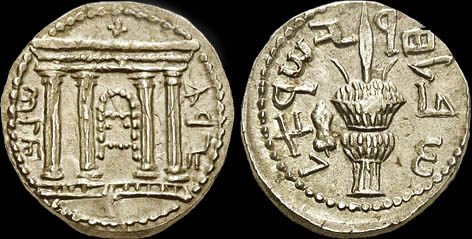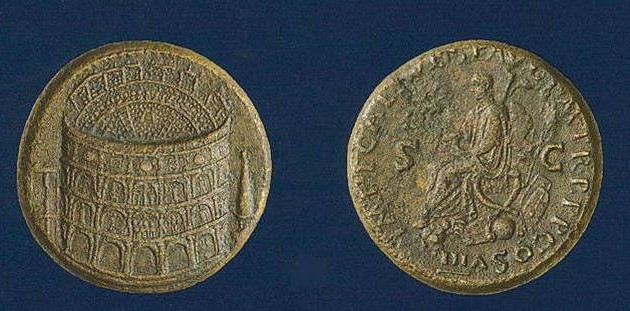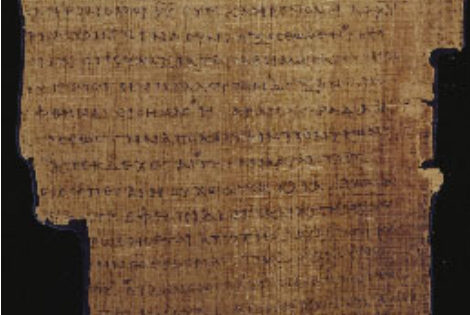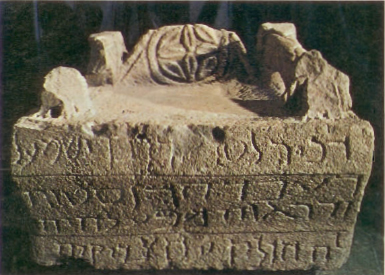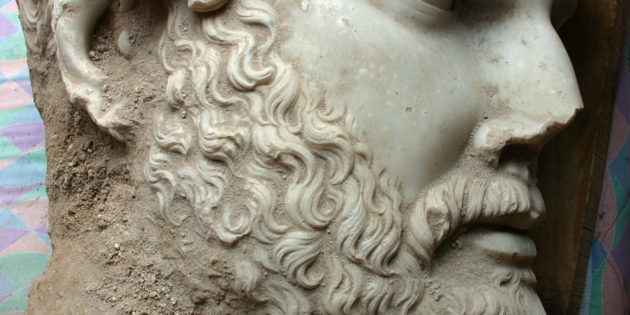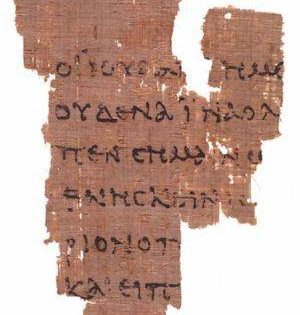Home » Bible and Beyond » Roman Period II
Roman Period II
“The freedom of Israel” Like footprints in the sand, coins can mark the presence of people who left no other remains. These coins, minted during the Second Jewish Revolt against Rome (132–135 A.D.) led by the charismatic Bar-Kokhba, read either “year 1,” “year 2” or “year 3.” They display symbols typically found on coins of […]
Bible and Beyond “Simeon ben Kosba president of Israel and his economic chief. Peras.” Bar Kokhba Weight Simon Bar Kokhba Lead weight—found by Amos Kloner at Alim near Kiryat Gat. Face A of the lead weight discovered recently to a burrow, or low tunnel, used by Jewish defenders during the Second Jewish Revolt against Rome […]
Preparing for Sukkot “Shimon to Yehudah, son of Menasheh, at Qiryat Arabayyah- I have delivered to you two donkeys (in order) that you dispatch along with them two men to Yehonathan, son of Ba’yan, and to Mesabalah (in order) that they pack up and deliver to the camp, to you, palm branches and citrons. And […]
Coin of Titus depicting the Colosseum. The Colosseum – the greatest amphitheater of the antiquity – was built in Rome, Italy, about 1920 years ago. It is considered an architectural and engineering wonder, and remains as a standing proof of both the grandeur and the cruelty of the Roman world. The Colosseum
Shema Yisrael Archaeologists from the Institute of Prehistory and Early History of the University of Vienna have found an amulet inscribed with a Jewish prayer in a Roman child’s grave dating back to the 3rd century CE at a burial ground in the Austrian town of Halbturn. The 2.2-centimeter-long gold scroll represents the earliest sign […]
Victims of the Mount Vesuvius Eruption The 79 CE eruption of Mount Vesuvius completely destroyed Pompeii and Herculaneum. Today plaster casts of actual victims found during excavations are on display in some of the ruins. The site is called Garden of the Fugitives.
Paul’s Letter to the Romans A book of the New Testament in which Paul writes to introduce himself and his message to the Christians at Rome, seeking to enlist their support for the proposed mission to Spain.
Moses Seat “The scribes and the Pharisees sit on Moses’ seat” (Mt. 23.2), a carved stone chair reserved for a visitor of for the most distinguished elder of a synagogue. This one is from Chorazin, one of the three towns Jesus inveighed against for their citizens’ hypocrisy. G. Ernest Wright (ed.), Great People of the […]
A huge, exquisitely carved marble statue of the Roman emperor Hadrian is the latest find from Sagalassos, an ancient Greco-Roman city in south-central Turkey. Archaeologists estimate that the figure was originally between 13 and 16 feet in height (four to five meters). It is, says excavation director Marc Waelkens, one of the most beautiful portraits […]
Oldest Text from the New Testament Gospel of John This papyrus fragment includes a portion of The Gospel of John 18-31-33 (left side) and 18-37-38 (right side). It was discovered in Egypt, demonstrating that Christianity had already spread beyond Palestine. Although John was one of the last books of the New Testament to be written, […]

